Sourav Pan
Transcript
Hey everyone! Today, we’re diving into the fascinating world of Spirogyra. Let’s start by understanding what this remarkable organism actually is.
Spirogyra is a type of green algae that lives in freshwater environments. You might have seen it floating in ponds and streams, looking like slimy green threads or mats on the water surface.
Spirogyra belongs to the phylum Chlorophyta, which means it’s a true green algae. As a photosynthetic organism, it’s actually classified as a plant, capable of making its own food using sunlight.
Under a microscope, Spirogyra reveals its beautiful structure. Each cell contains distinctive spiral-shaped chloroplasts that give it its characteristic appearance. The cells are arranged in long, unbranched filaments.
People often call Spirogyra ‘water silk’ or ‘mermaid’s tresses’ because of its silky, smooth texture and long, flowing appearance that resembles hair or fine threads floating in the water.
So in summary, Spirogyra is a fascinating freshwater green algae with a unique spiral structure that makes it both beautiful and easily recognizable in aquatic environments.
Have you ever wondered why this fascinating algae is called Spirogyra? The answer lies in its most distinctive and beautiful feature.
The name Spirogyra comes from two Greek words. Speira, meaning coil, and gyros, meaning twisted. Together, they perfectly describe this organism’s most remarkable characteristic.
Now let’s see what makes Spirogyra so special. Each cell contains these beautiful spiral-shaped chloroplasts that wind around inside like twisted ribbons.
Here’s an even closer look at a single cell. You can clearly see the vibrant green chloroplast spiraling through the cell like a twisted ribbon of life.
These spiral chloroplasts are not just beautiful – they’re the powerhouses of the cell. Just like leaves on land plants, they capture sunlight and convert it into energy through photosynthesis.
When you see multiple cells together in a filament, each one contains these same spiral chloroplasts, creating a beautiful pattern that runs throughout the entire organism.
So now you know the secret behind the name. Spirogyra literally means twisted coil, perfectly describing those beautiful spiral chloroplasts that make this algae so distinctive and important in aquatic ecosystems.
You might be surprised to learn just how diverse the world of Spirogyra really is. The answer to how many types exist is quite remarkable.
Believe it or not, there are over four hundred different species of Spirogyra found around the world! This incredible diversity makes Spirogyra one of the most widespread and varied genera of freshwater algae.
All of these Spirogyra species live exclusively in freshwater environments. You can find them in small ponds, large lakes, flowing streams, and mighty rivers. Each habitat may host different species adapted to those specific conditions.
Here we can see a typical pond ecosystem where multiple Spirogyra species might coexist. These algae play important roles in their aquatic communities, providing oxygen and serving as food for various organisms.
While each of the four hundred plus species has slightly different characteristics, they all share some fundamental features. Species may differ in cell size, filament length, habitat preferences, and reproductive timing.
However, every single Spirogyra species shares those signature spiral chloroplasts, the filamentous structure, and the preference for freshwater environments. These common features unite this diverse group of algae.
No matter which of the four hundred species you examine, you will always find those distinctive spiral-shaped chloroplasts. This characteristic spiral pattern is what gives Spirogyra its name and serves as the unifying feature across all species in this remarkable genus.
Spirogyra is much more than just a simple green algae floating in water. It plays several crucial roles that help maintain healthy aquatic ecosystems.
The most important role Spirogyra plays is photosynthesis. Like all green plants, Spirogyra uses sunlight to convert carbon dioxide and water into glucose and oxygen.
Here we can see Spirogyra cells under a microscope. Those bright green structures are the chloroplasts where photosynthesis takes place.
The oxygen produced by Spirogyra is released into the water as tiny bubbles. This process is vital for keeping aquatic environments healthy and supporting fish and other water-dwelling creatures.
Spirogyra also serves as an important food source in aquatic ecosystems. Many small organisms feed on it, which then become food for larger animals, creating a vital link in the food chain.
However, when conditions are right, Spirogyra can grow very rapidly, sometimes forming large blooms. While this produces lots of oxygen during the day, it can also lead to problems.
In summary, Spirogyra plays three key environmental roles: it produces oxygen through photosynthesis, serves as food for aquatic organisms, and helps maintain the balance of aquatic ecosystems when present in appropriate amounts.
Understanding these environmental roles helps us appreciate why Spirogyra is such an important part of freshwater ecosystems around the world.
Now let’s examine Spirogyra’s structure more closely. Spirogyra has what we call an unbranched filamentous structure.
What does filamentous mean? Think of it like a long thread made up of cylindrical cells that are joined end-to-end, one after another.
These cylindrical cells join together end-to-end to form a continuous filament. Watch as these separate cells connect to create the thread-like structure.
This is exactly like a strand of beads, where each bead represents a single cell. The cells are connected in a long, unbranched chain.
Now let’s look at a real diagram of Spirogyra to see this filamentous structure in action. Here you can see the actual cellular arrangement.
Notice how each rectangular cell connects directly to its neighbors, forming one continuous, unbranched thread. This filamentous structure is what gives Spirogyra its characteristic appearance in water.
This simple but effective structure allows Spirogyra to form long, flexible threads that can float freely in water while maintaining their cellular organization.
Each Spirogyra cell is like a tiny, self-contained factory. Inside this microscopic powerhouse, several key components work together to keep the cell alive and functioning.
The most distinctive feature inside each cell is the spiral-shaped chloroplast. This green, ribbon-like structure winds around the inside of the cell like a twisted staircase, giving Spirogyra its characteristic appearance.
At the center of each cell is the nucleus, which acts as the cell’s control center. This spherical structure contains the cell’s genetic material and coordinates all cellular activities, much like a computer’s central processing unit.
Filling the space around these structures is the cytoplasm, a jelly-like substance that acts as the cell’s internal highway. This gel-like material allows nutrients, waste products, and other molecules to move throughout the cell.
The largest structure in the cell is the central vacuole, a storage compartment that can take up most of the cell’s interior space. This water-filled sac stores nutrients, maintains cell pressure, and helps give the cell its shape.
All these components work together as a coordinated team. The chloroplasts capture sunlight and produce food, the nucleus directs cellular activities, the cytoplasm transports materials, and the vacuole provides storage and support. This teamwork makes each Spirogyra cell a highly efficient living unit.
Every Spirogyra cell is surrounded by protective layers that keep it safe and help it survive in aquatic environments. These protective structures have specific compositions and important functions.
The Spirogyra cell wall consists of two distinct layers. The inner layer is made of cellulose, which provides structural strength and rigidity. The outer layer contains pectin, which is more flexible and gel-like in nature.
Surrounding the cell wall is the mucilage sheath, a slimy coating made of polysaccharides. This sheath covers the entire filament and gives Spirogyra its characteristic slippery feel when touched.
The mucilage sheath serves several important functions. It prevents the algae from drying out when water levels drop, reduces friction as the filament moves through water, and actually helps the Spirogyra glide and move more easily.
These protective layers work together to keep Spirogyra healthy. The mucilage sheath prevents desiccation by retaining moisture around the cells, which is crucial when water levels fluctuate in ponds and streams.
For movement, the slimy sheath reduces water resistance and allows the filament to glide smoothly through the water. It also acts as an environmental buffer, cushioning against impacts and filtering out potentially harmful substances.
In summary, the cell wall and mucilage sheath form a sophisticated multi-layered protective system. Together, they keep Spirogyra safe from environmental threats while enabling it to move efficiently through its aquatic habitat.
Spirogyra has specific habitat preferences that make it thrive in certain aquatic environments. Understanding where this green algae lives helps us appreciate its role in freshwater ecosystems.
Spirogyra loves freshwater environments. You can find this green algae in ponds, lakes, streams, and rivers around the world. It has adapted to thrive in various freshwater habitats.
Spirogyra often forms floating masses near the water surface, creating what looks like a green mat or blanket covering parts of the water. These floating masses are easily visible and give the water a distinctive green appearance.
These floating masses stay at the surface because of tiny oxygen bubbles produced during photosynthesis. As Spirogyra uses sunlight to make food, it releases oxygen gas that forms bubbles, making the algae buoyant and helping it float.
Here we can see what Spirogyra looks like in its natural habitat. The thick green layer covering the water surface is made up of countless Spirogyra filaments floating together, creating these characteristic green mats.
Spirogyra plays an important role in pond ecosystems. As a primary producer, it converts sunlight into food energy, produces oxygen for other organisms, and serves as a food source for various aquatic animals, making it a vital part of the freshwater food web.
The key takeaway is that Spirogyra thrives in freshwater environments where it forms distinctive floating green mats. These mats stay at the surface thanks to oxygen bubbles produced during photosynthesis, making Spirogyra easily recognizable in ponds, lakes, streams, and rivers.
Spirogyra is remarkably adaptable to different water conditions. Unlike many algae that require specific environments, Spirogyra species can thrive in a variety of aquatic habitats, from still ponds to flowing streams.
In still waters like ponds and lakes, Spirogyra often forms floating mats near the surface. These green masses can cover large areas, creating what looks like a green carpet on the water.
However, some Spirogyra species actually prefer slow-running streams and rivers. In these flowing environments, they don’t float freely but instead attach themselves to rocks, logs, and other stable surfaces.
When Spirogyra grows in flowing water, it appears as distinctive green clumps. These clumps are actually colonies of many filaments that have anchored themselves to the substrate and grown together for stability.
One of Spirogyra’s most remarkable adaptations is its tolerance to a wide range of light conditions. It can photosynthesize effectively in bright surface waters as well as in deeper, dimmer environments.
This adaptability to different light and flow conditions makes Spirogyra one of the most successful freshwater algae. Whether in a quiet pond or a babbling brook, Spirogyra finds a way to establish itself and contribute to the aquatic ecosystem.
Spirogyra has several ways to reproduce, and one of the most common methods is called vegetative reproduction through fragmentation.
Fragmentation is a simple but effective process. When a Spirogyra filament breaks apart into smaller segments, each piece can grow into a completely new filament.
Now watch what happens when this filament breaks apart. Environmental factors like water movement, physical disturbance, or natural aging can cause the filament to fragment.
Each fragment contains all the genetic information needed to grow into a new, complete filament. This is essentially biological cloning – each new filament will be genetically identical to the original.
The growth process begins immediately. Each fragment starts developing new cells at both ends, gradually extending to form a full-length filament again.
This type of reproduction is incredibly efficient. It allows Spirogyra to rapidly colonize new areas and recover quickly from environmental disturbances that might damage the population.
Unlike sexual reproduction, fragmentation produces offspring that are genetically identical to the parent. This ensures that successful traits are preserved and passed on to the next generation.
When Spirogyra faces tough environmental conditions, it has a clever survival strategy. Instead of relying only on fragmentation, it can create special structures called spores through asexual reproduction.
Here we see a normal Spirogyra filament with its characteristic spiral chloroplasts. But when conditions become unfavorable – like extreme temperatures, drought, or nutrient shortage – something remarkable happens.
Environmental stresses like extreme temperatures, drought conditions, or nutrient shortages trigger Spirogyra to switch to survival mode.
In response to these harsh conditions, Spirogyra forms three different types of spores. Let’s examine each type and understand how they work as survival pods.
The first type is the akinete. This is essentially a vegetative cell that has thickened its cell wall and filled itself with stored nutrients. Think of it as a cell that has packed its bags for a long journey.
The second type is the aplanospore. These are non-motile spores that form inside vegetative cells. Unlike swimming spores, aplanospores stay put and wait for better conditions before germinating.
The third type is the azygospore. This forms when a single cell develops a thick protective wall without any sexual fusion. It’s like a solo survival capsule that can endure extreme conditions.
These spores function as incredible survival pods. They develop thick protective walls that shield them from harsh conditions, store essential nutrients for future growth, and enter a dormant state with very low metabolism.
When environmental conditions improve and become favorable again, these hardy spores spring back to life. They absorb water, break out of their protective walls, and begin growing into new healthy Spirogyra filaments.
This asexual spore formation is like Spirogyra’s insurance policy against environmental disasters. By creating these survival pods, Spirogyra ensures that even when conditions become deadly, life can continue and thrive when better times return.
Spirogyra has a fascinating method of sexual reproduction called conjugation. Unlike simple cell division, conjugation involves two separate filaments coming together to exchange genetic material and create offspring with genetic diversity.
Conjugation begins when two Spirogyra filaments come into close contact with each other. These filaments align themselves side by side, positioning their cells directly opposite to one another.
One filament acts as the female, which will receive genetic material, while the other acts as the male, which will donate its cellular contents. The cells in each filament prepare for the conjugation process.
Next, the aligned cells begin forming conjugation tubes. These are small bridge-like structures that connect corresponding cells from each filament, creating a pathway for genetic material to pass through.
This diagram shows the detailed structure during conjugation. You can see the cell walls, chloroplasts, nucleus, and other cellular components, along with the conjugation tube that forms between the cells.
This diagram illustrates the complete conjugation process step by step. First, the conjugation tube forms between adjacent cells. Then, the male gamete migrates through the tube to fuse with the female gamete, ultimately forming a zygospore.
During conjugation, the contents of the male cell, including the nucleus and cytoplasm, migrate through the conjugation tube. This creates a gamete that travels to fuse with the female cell contents.
Watch as the male gamete travels through the conjugation tube toward the female cell. This migration process transfers genetic material from one filament to the other.
When the male and female gametes fuse together, they form a zygospore. This zygospore contains genetic material from both parent filaments, creating genetic diversity that is essential for the species’ survival and adaptation.
Conjugation is crucial for Spirogyra because it introduces genetic variation into the population. This sexual reproduction method helps the species adapt to changing environmental conditions and ensures long-term survival.
Spirogyra has two distinct methods of sexual reproduction through conjugation. Understanding these two types helps us see how this algae adapts to different environmental conditions.
The first type is scalariform conjugation, which occurs between two separate filaments. The second type is lateral conjugation, which happens within a single filament.
Scalariform conjugation involves two separate filaments forming conjugation tubes between them. This is the more common type. Lateral conjugation happens within a single filament when adjacent cells connect directly, often occurring under environmental stress.
Let’s examine each type in detail using microscopic images and diagrams.
In scalariform conjugation, two filaments position themselves parallel to each other. Conjugation tubes form like bridges between opposing cells. The male gamete then travels through these tubes to reach and fuse with the female gamete.
Now let’s look at the second type of conjugation.
Lateral conjugation occurs within a single filament. Adjacent cells form a short conjugation tube between them. One cell becomes the male donor while the neighboring cell becomes the female recipient.
Both types of conjugation achieve the same goal – creating a zygospore for sexual reproduction.
The key takeaway is that both scalariform and lateral conjugation produce the same result: a zygospore. This thick-walled reproductive cell can survive harsh conditions and eventually germinate to form new Spirogyra filaments.
After conjugation occurs between Spirogyra filaments, the fused cell begins an important transformation process. The combined genetic material and cellular contents must now develop into a specialized survival structure called a zygospore.
The zygospore development begins immediately after the cellular contents fuse. This newly formed cell must prepare for potentially harsh environmental conditions by building protective barriers around itself.
The developing zygospore creates a remarkable multi-layered cell wall system. This wall consists of three distinct layers, each with its own composition and protective function.
The outermost layer is called the exospore. This tough exterior layer provides the first line of defense against physical damage and environmental extremes like temperature fluctuations.
The middle layer is the mesospore, which has a different chemical composition than the outer layer. This layer provides additional structural support and helps regulate water movement.
The innermost layer is the endospore, which directly surrounds the cellular contents. This layer has yet another distinct composition and provides the final protective barrier for the genetic material and nutrients inside.
This sophisticated wall system allows the zygospore to survive extreme environmental stresses. It can withstand complete drying out, freezing temperatures, and other harsh conditions that would kill normal vegetative cells.
Here we can see a detailed scientific image of an actual Spirogyra zygospore. This electron microscope image shows the complex internal structure and the protective wall layers we just discussed.
The zygospore can remain dormant for extended periods, sometimes months or even years, until environmental conditions become favorable again. When conditions improve, the zygospore will germinate and begin the next generation of Spirogyra filaments.
The three-layered wall system of the zygospore represents one of nature’s most effective survival strategies, allowing Spirogyra to persist through challenging environmental conditions and continue its life cycle when the time is right.
Environmental conditions play a crucial role in determining when Spirogyra switches from asexual to sexual reproduction through conjugation.
The first major factor is high light intensity. When Spirogyra experiences abundant sunlight, it creates stress conditions that can trigger the conjugation process.
The second critical factor is nitrogen depletion. When nitrogen becomes scarce in the water, Spirogyra faces nutritional stress that also promotes conjugation.
When both high light and nitrogen depletion occur together, Spirogyra responds by switching from asexual reproduction to sexual reproduction through conjugation.
This switch increases genetic diversity, which is crucial for adapting to changing environmental conditions.
The increased genetic variation improves the species’ chances of survival in stressful environments.
Here we can see the conjugation process in detail. Adjacent filaments form conjugation tubes, allowing genetic material to transfer between cells.
This diagram shows the complete conjugation lifecycle, from the initial vegetative filaments through zygospore formation to the emergence of new genetically diverse filaments.
In summary, environmental stress from high light intensity and nitrogen depletion acts as a natural trigger for Spirogyra to increase its genetic diversity through conjugation, ensuring better adaptation and survival.
Spirogyra isn’t just a simple pond algae – it’s nature’s own water treatment plant. This remarkable organism can actually clean polluted water by removing dangerous heavy metals and toxic compounds.
Bioremediation means using living organisms to clean up environmental pollution. Instead of expensive chemical treatments, we can harness the natural abilities of organisms like Spirogyra.
Spirogyra filaments act like tiny natural sponges. Their cell walls and surface structures can absorb and bind heavy metals from contaminated water, effectively removing these dangerous pollutants.
Spirogyra can remove six major heavy metals from contaminated water: lead, cadmium, zinc, chromium, copper, and nickel. These metals are commonly found in industrial wastewater and pose serious health risks.
Two species stand out for their exceptional bioremediation abilities. Spirogyra splendida and Spirogyra circumlineata have been scientifically proven to be highly effective at removing heavy metals from industrial wastewater.
The bioremediation process is straightforward. Polluted water containing heavy metals flows through Spirogyra filaments. The algae absorbs and binds the toxic metals, leaving behind much cleaner water.
This natural bioremediation technology is already being used in real-world applications. Industrial wastewater treatment plants, mining operations, and environmental cleanup projects are all benefiting from Spirogyra’s remarkable ability to remove heavy metal contamination safely and cost-effectively.
Aquaculture, or fish farming, is one of the fastest-growing food production sectors worldwide. Scientists are constantly looking for ways to improve fish nutrition and growth while reducing costs.
Spirogyra, the green algae we’ve been studying, has emerged as a promising feed supplement in aquaculture. Its high nutritional value and natural availability make it an attractive option for fish farmers.
A recent study in 2025 focused on the pearlspot fish, scientifically known as Etroplus suratensis. This popular aquaculture species is commonly farmed in South and Southeast Asia.
Researchers tested different amounts of Spirogyra in the fish feed. They found that adding 22.5 percent Spirogyra to the diet produced the best results for fish growth and feed efficiency.
The study showed remarkable improvements. Fish fed with Spirogyra-supplemented diets had better growth performance, improved feed utilization, and enhanced overall health compared to control groups.
This research demonstrates Spirogyra’s potential as a sustainable and cost-effective feed supplement in aquaculture. As the industry continues to grow, natural supplements like Spirogyra could help meet the increasing demand for fish protein while supporting environmental sustainability.
Traditional plastics are causing a massive environmental crisis. But scientists have discovered that Spirogyra, our green algae friend, might hold the key to creating sustainable, biodegradable plastic alternatives.
The problem with traditional plastics is that they’re made from petroleum, a non-renewable resource, and they can take hundreds of years to decompose in the environment.
Enter Spirogyra – a renewable, fast-growing algae that scientists are now using to create biodegradable plastics. Let’s see how this amazing organism can help solve our plastic problem.
What makes Spirogyra perfect for plastic production? First, it’s completely renewable. Unlike petroleum which takes millions of years to form, Spirogyra can be grown and harvested continuously.
Spirogyra is also incredibly easy to cultivate. It can be grown in simple ponds or tanks, requiring only water, sunlight, and basic nutrients. This makes it much more sustainable than petroleum extraction.
The process of converting Spirogyra into biodegradable plastic involves extracting cellulose and other polymers from the algae cells, then processing them into plastic materials that naturally break down in the environment.
The environmental benefits are remarkable. While traditional plastics persist for centuries, Spirogyra-based plastics break down naturally in months, reducing pollution and helping protect our ecosystems.
Research into Spirogyra-based biodegradable plastics is still developing, but early results are promising. This technology could revolutionize how we make plastics, creating a truly sustainable alternative that works with nature instead of against it.
Spirogyra offers exciting potential as a renewable energy source through biogas production. This green algae can be transformed into clean-burning methane fuel through a natural biological process.
Biogas is a renewable energy source produced when organic materials decompose without oxygen. It consists primarily of methane, the same gas used in natural gas heating and cooking.
Spirogyra serves as excellent feedstock for biogas production. Its high organic content and rapid growth make it an ideal renewable resource for energy generation.
The biogas production process occurs in specialized digesters. These sealed containers create an oxygen-free environment where bacteria break down the Spirogyra into methane and carbon dioxide.
The complete biogas production system follows a systematic workflow. Spirogyra is collected, pre-treated, and fed into anaerobic digesters where it’s converted into valuable biogas and nutrient-rich sludge.
Spirogyra neglecta is particularly well-suited for biogas production. This species has optimal characteristics including high biomass yield and efficient methane conversion rates.
The methane produced from Spirogyra biogas has multiple applications. It can generate electricity, provide heating fuel, or even power vehicles when properly processed and purified.
Spirogyra biogas production represents a sustainable solution that converts algae waste into valuable energy while reducing environmental impact. This technology supports the transition to renewable energy sources.
Traditional chemical fertilizers have dominated agriculture for decades, but nature offers us a sustainable alternative. Spirogyra, the green algae we’ve been studying, can serve as an excellent biofertilizer.
Let’s examine the key differences between biofertilizers and chemical fertilizers. This comparison shows why Spirogyra and other biological alternatives are gaining attention in sustainable agriculture.
Biofertilizers are living microorganisms that enhance plant nutrition naturally. Unlike chemical fertilizers that directly supply nutrients, biofertilizers work by improving soil health and gradually releasing nutrients as they decompose.
When Spirogyra is added to soil, it begins to decompose and release essential nutrients. The algae contains nitrogen, phosphorus, potassium, and various micronutrients that plants need for healthy growth.
The environmental benefits of using Spirogyra as a biofertilizer are significant. It reduces chemical runoff into waterways, improves soil structure, and promotes beneficial microbial activity in the soil ecosystem.
The process is remarkably simple and sustainable. Spirogyra can be harvested from natural water bodies or cultivated specifically for agricultural use. Once dried and processed, it can be mixed directly into soil or composted with other organic materials.
This sustainable approach to fertilization represents a shift toward more environmentally conscious agriculture. By using Spirogyra as a biofertilizer, farmers can maintain soil health, reduce environmental impact, and support long-term agricultural sustainability.
Spirogyra isn’t just an interesting algae – it’s actually packed with nutrients that make it valuable as a food supplement. This green algae contains an impressive array of essential compounds that benefit both humans and animals.
The most notable nutrients in Spirogyra are its photosynthetic pigments. Chlorophyll a and chlorophyll b give it the green color, while carotenoids provide additional nutritional benefits and antioxidant properties.
Carotenoids are particularly important antioxidants. Spirogyra contains several types including beta-carotene, lutein, and zeaxanthin, which support eye health and immune function.
Beyond pigments, Spirogyra contains essential macronutrients. It’s rich in proteins, carbohydrates, and contains beneficial fats. The algae also provides minerals in the form of ash content and has optimal moisture levels.
This impressive nutritional profile makes Spirogyra an excellent food supplement. The high protein content supports muscle development, while the carbohydrates provide energy. The minerals and vitamins contribute to overall health and wellness.
Spirogyra supplements benefit both humans and animals. For humans, it can enhance nutrition in diets lacking fresh vegetables. In aquaculture, studies show that adding Spirogyra to fish feed improves growth performance and feed utilization, particularly in species like pearlspot fish.
Research continues to explore Spirogyra’s potential as a sustainable, nutrient-dense food supplement. Its natural abundance, combined with its impressive nutritional profile, makes it a promising addition to both human diets and animal feed formulations.
Scientists are discovering that Spirogyra, this simple green algae, may hold significant medicinal potential. Researchers around the world are investigating how this aquatic organism could contribute to human health and pharmaceutical development.
To understand Spirogyra’s medicinal potential, we first need to examine its cellular structure. Each cell contains specialized organelles and compounds that contribute to its therapeutic properties.
One species receiving particular attention is Spirogyra varians. This specific species has been identified by researchers as having exceptionally high nutrient density, making it a prime candidate for pharmaceutical applications.
The high nutrient content of Spirogyra includes proteins, carbohydrates, essential minerals, and various bioactive compounds. These nutrients form the foundation for its potential medicinal applications.
Research has revealed that Spirogyra possesses significant antioxidant properties. Antioxidants are crucial compounds that protect our cells from damage caused by harmful free radicals, potentially reducing the risk of various diseases.
Additionally, studies have demonstrated that Spirogyra exhibits anti-inflammatory properties. Inflammation is the body’s natural response to injury or infection, but chronic inflammation can contribute to many health problems. Spirogyra’s compounds may help regulate this inflammatory response.
Current research trends show increasing interest in Spirogyra’s pharmaceutical potential. Scientists are working to identify specific bioactive compounds, understand their mechanisms of action, and develop potential therapeutic applications for various health conditions.
Spirogyra serves as a valuable biological indicator, helping scientists assess the health and quality of aquatic environments. The presence and diversity of Spirogyra can reveal important information about water conditions.
When Spirogyra is abundant and diverse in a water body, it typically indicates cleaner, healthier water conditions. Conversely, when Spirogyra is absent or scarce, it often suggests the water may be polluted or stressed.
To understand how Spirogyra indicates water quality, we need to understand trophic conditions. Trophic levels describe the nutrient content and productivity of aquatic ecosystems, from nutrient-poor to nutrient-rich environments.
This comparison shows the difference between clean and polluted water. In oligotrophic or clean water environments, Spirogyra typically dominates the algal community. In eutrophic or nutrient-polluted water, other types of algae and cyanobacteria become more prevalent.
In clean water environments, Spirogyra displays several characteristics that indicate healthy conditions. The algae shows vibrant green chloroplasts, clear cellular structure, and forms abundant filaments through active photosynthesis.
Spirogyra serves as an excellent water quality indicator because it is sensitive to pollution and toxins. It requires stable, balanced nutrient conditions to thrive. In polluted water, Spirogyra is often outcompeted by other algae species that are more tolerant of high nutrient levels and contamination.
The key takeaways are clear: abundant Spirogyra typically indicates healthier water conditions, while its absence may signal pollution. This makes Spirogyra a valuable tool for environmental monitoring and assessing overall ecosystem health in aquatic environments.
Study Materials
Spirogyra - Definition, Structure, Life Cycle, Diagram, Reproduction
Comments 1
- Text Highlighting: Select any text in the post content to highlight it
- Text Annotation: Select text and add comments with annotations
- Comment Management: Edit or delete your own comments
- Highlight Management: Remove your own highlights
Start Asking Questions Cancel reply
Helpful: 0%
Related Videos
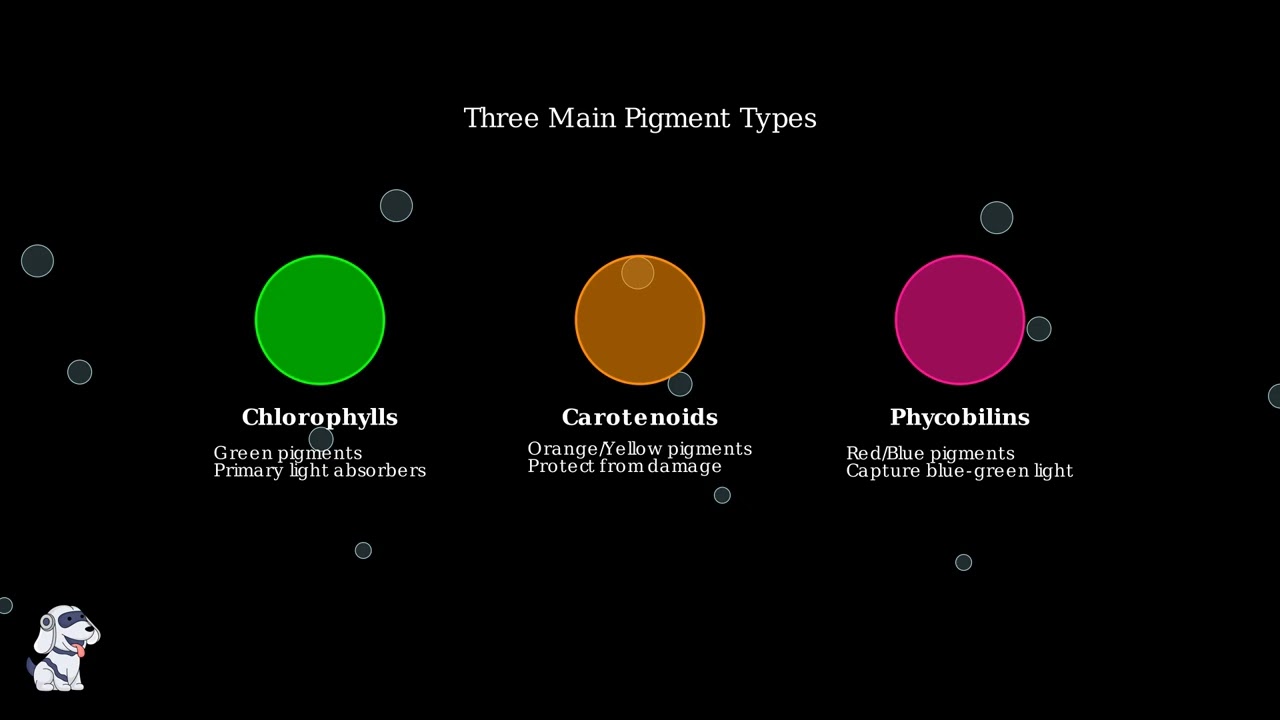
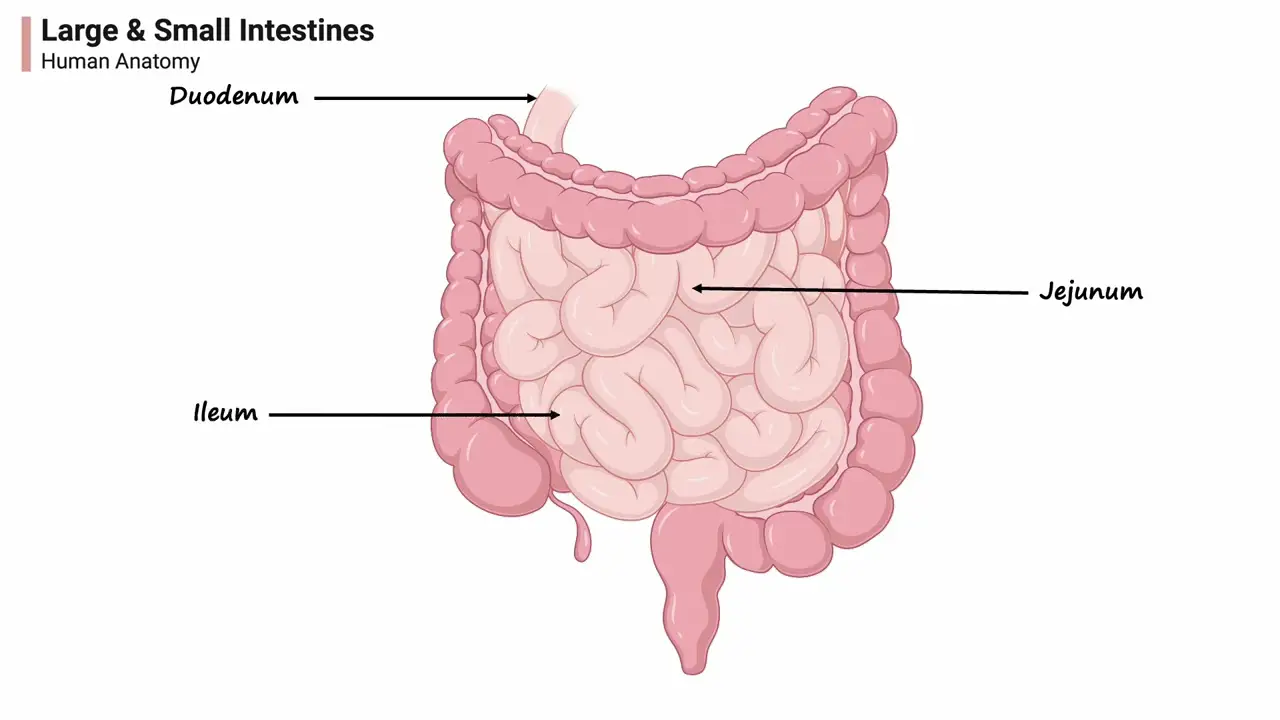
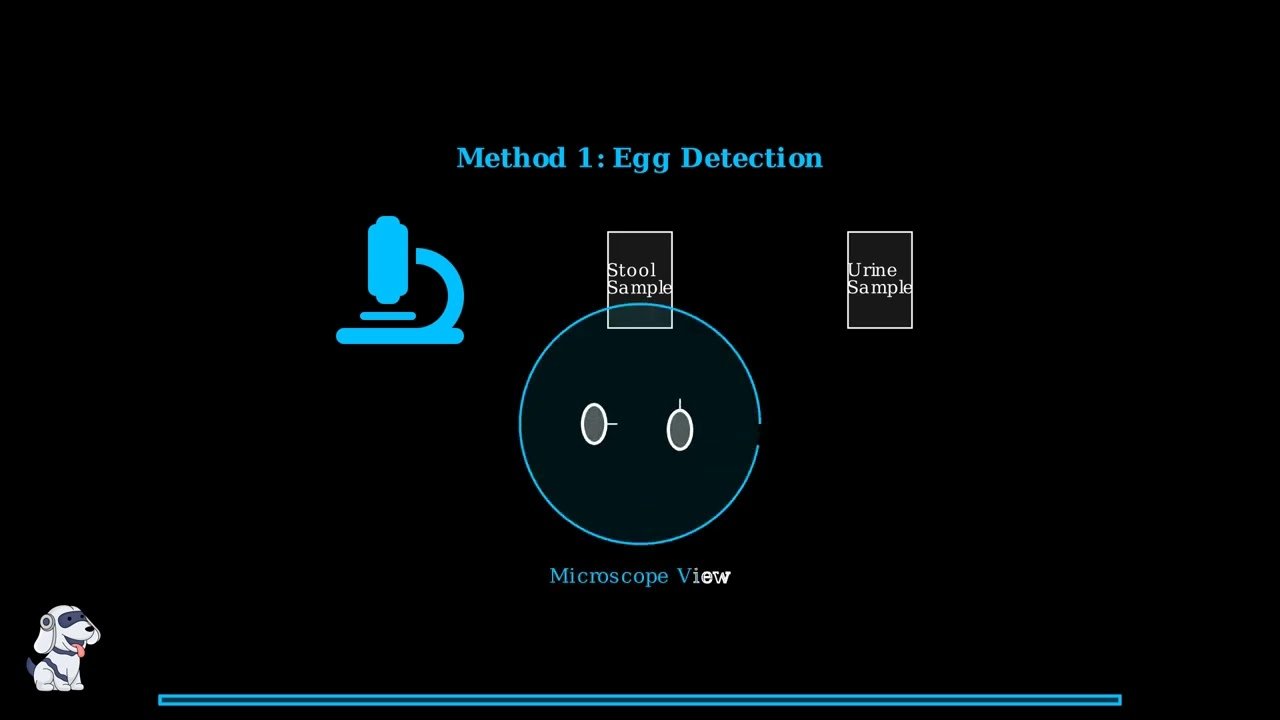

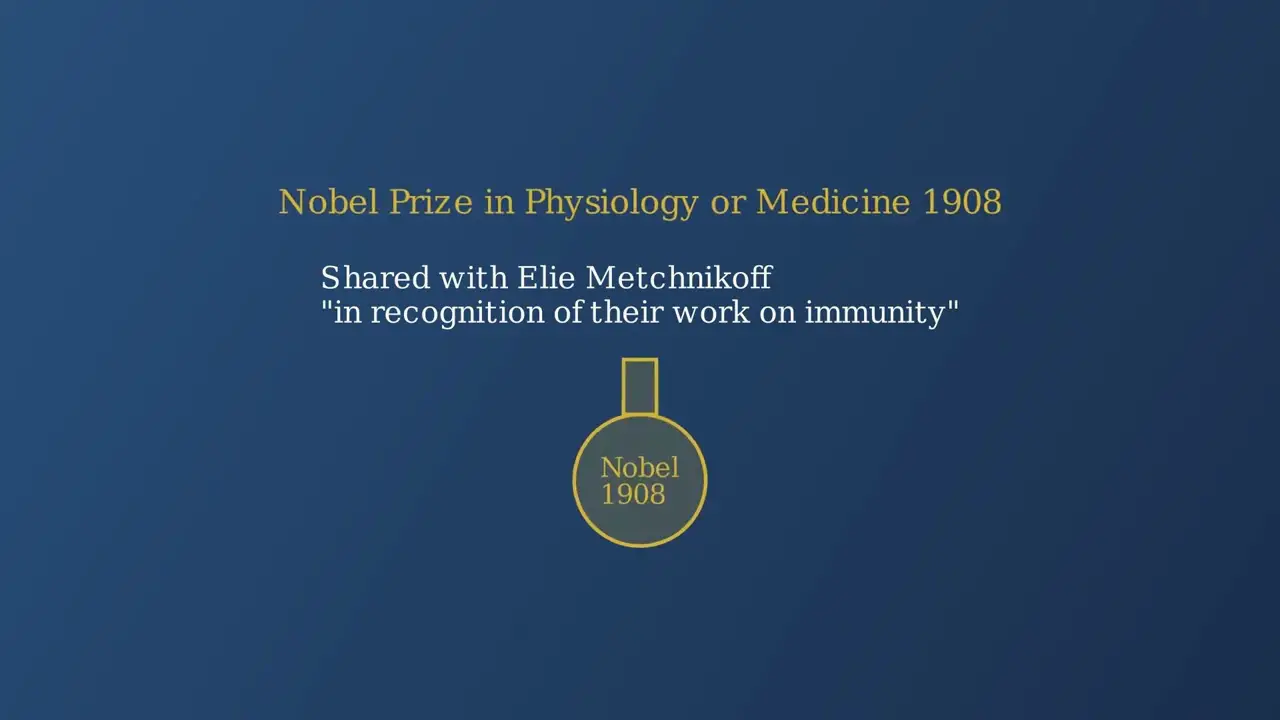


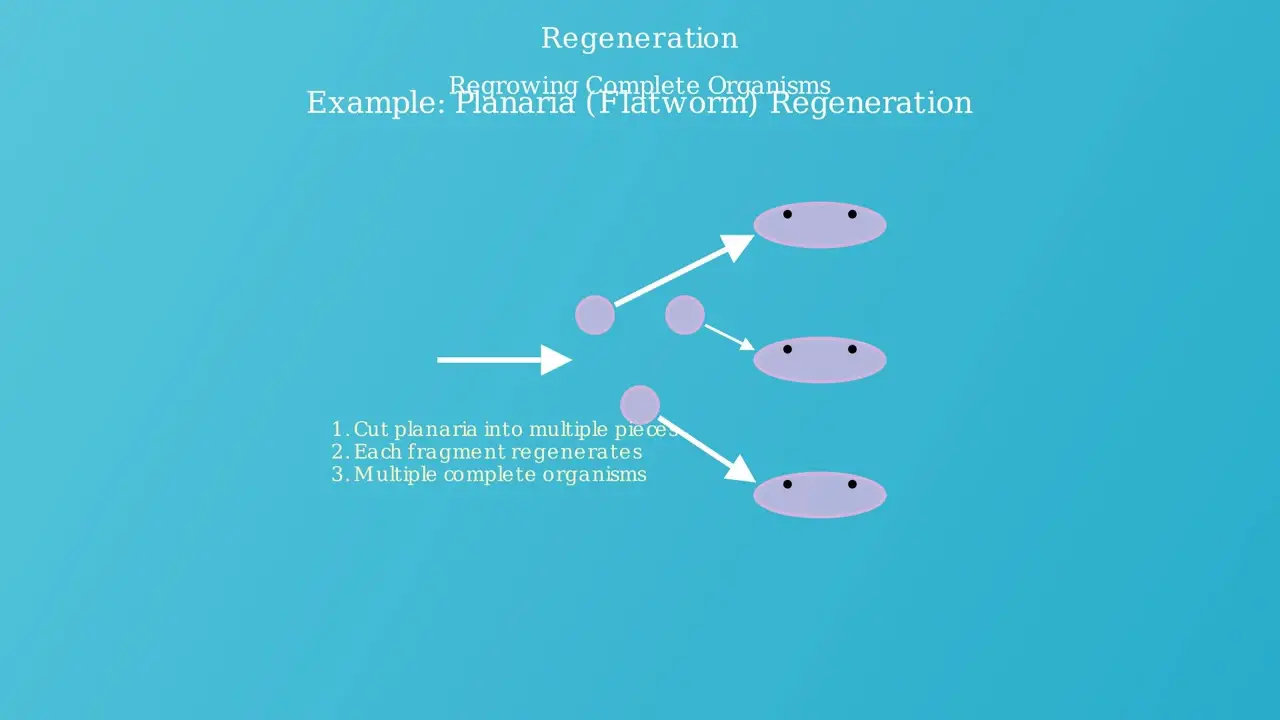

I think this note is very well for me